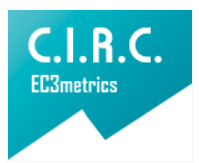Oscillopathology in Autist Spectrum Disorder
Oscilopatología en Trastornos del Espectro Autista Brain oscillations in Language Processes
Main Article Content
Language as a vehicle for human development has an important impact on social processes which are decisive in the establishment of optimal living conditions. Modern studies have found that skills that make of language an activity of complex multisensory integration are determined by the oscillation rhythms of the different brain waves described from neurosciences. In the literature has described an abnormal pattern of oscillations, responsible for communicative deficiencies in individuals with Autism Spectrum Disorders and beside with social deficits, resulting in a typically characteristic profile. Brain waves show an impact on the mental states that be high cognitive demand as learning, communication and speech understanding, widespread difficulties in this population. The recent findings presented here and product of a judicious bibliographic review, are characterized within speech therapy making it possible to land the intervention processes to the linguistic and cognitive needs of these individuals, using biological mechanisms and resulting in possible procedures of greater relevance and effectiveness, that improve user’s life quality and motivate speech therapy and similar professionals to expand their knowledge in this interesting field.
Downloads
Publication Facts
Reviewer profiles N/A
Author statements
Indexed in
- Academic society
- Bogotá: Corporación Universitaria Iberoamericana
- Publisher
- Bogotá: Corporación Universitaria Iberoamericana
Article Details
Basar, E., & Bahar, G. (2008). A Review of Brain Oscillations in Cgnitive Disorders and the Role of Neurotransmitters. Brain Research, 1235, 172-193. doi: 10.1016/j.brainres.2008.06.103.
Belinchón, M., Riviere, A., & Igoa, J. (1992). Psicología del lenguaje investigación y teoría. Trotta.
Benitez-Burraco, A., & Murphy, E. (2016). The Oscillopathic Nature of Language Deficits in Autism: From Genes to Language Evolution. Frontiers in Human Neuroscience. doi: 10.3389/fnhum.2016.00120. eCollection 2016.
Bertone, A., Mottron, L., Jelenic, P., & Faubert, J. (2003). Motion Perception in Autism: A “Complex” Issue. Journal of Cognitive Neuroscience, 15(2), 218-225. DOI: 10.1162/089892903321208150
Boeckx, C., & Theofanopoulou, C. (2015). Language, Cognomes, and the Challenges of building Cognitive Phylogenies. Frontiers in Psychology, 6. DOI: 10.3389/fpsyg.2015.00784
Buzsáki, G., & Draguhn, A. (2004). Neuronal Oscillations in Cortical Networks. Science, 304, 1926-1929. doi: 10.1126/science.1099745.
Cannon, J., McCarthy, M., Lee, S., Lee, J., Börgers, C., Whittington, M.,
& Kopell, N. (2014). Neurosystems: Brain Rhythms and Cognitive Processing. The European Journal of Neuroscience, 39(5), 705-719. doi: 10.1111/ejn.12453. Epub 2013 Dec 13.
Engel, A., Fries, P., & Singer, W. (2001). Dynamic predictions: oscillations and synchrony in top-down processing. Nat. Rev. Neurosci, 2, 704-716. DOI: 10.1038/35094565
Jacob, S., Hähnke, D., & Nieder, A. (8 de agosto de 2018). Structuring
of Abstract Working Memory Content by Fronto-parietal Synchrony in Primate Cortex. Neuron, 99(3), 588-597. doi: 10.1016/j. neuron.2018.07.025.
Kikuchi, M., Shitamichi, K., Yoshimura, Y., Ueno, S., & Hiraishi, H. (2013). Altered brain connectivity in 3-to 7-year-old children with autism spectrum disorder. Neuroimage: Clinical of Science Direct, 2, 394- 402. doi: https://doi.org/10.1016/j.nicl.2013.03.003
Meyer, L. (2017). The neural oscillations of speech processing and language comprehension: state of the art and emerging mechanisms. European Journal of Neuroscience. doi: https://doi.org/10.1111/ ejn.13748
Molina, N. (2016). Escuela Politécnica Nacional. Obtenido de Repositorio Digital EPN: https://bibdigital.epn.edu.ec/handle/15000/16797
Murphy, E. (2015). The brain dynamics of linguistic computation. Frontiers in Psychology, 13. doi: https://doi.org/10.3389/fpsyg.2015.01515
Narita, H. (2014). Endocentric Structuring of Projection-free Syntax. John Benjamins Publishing Company. doi: https://doi.org/10.1075/la.218
Palva, J., & Palva, S. (2018). Functional Integration Across Oscillation Frequencies by Cross-Frequency Phase Synchronization. The European Journal of Neuroscience, 48(7), 2399-2406. doi: 10.1111/ ejn.13767. Epub 2017 Dec 2.
Quijada, C. (2008). Espectro autista. Revista Chilena de Pediatría, 79(1), 86- 91. doi: http://dx.doi.org/10.4067/S0370-41062008000700013
Theofanopoulou, C. B. (2018). Language, Syntax, and the Natural Sciences. (I. Á. Martin, Ed.) Press, Cambridge University.
Traub, R. D., Whittington, M. A., Colling, S. B., Buzsáki, G., & Jefferys, J. G. (1996). Analysis of Gamma Rhythms in the Rat Hippocampus in Vitro and in Vivo. The Journal of Physiology, (Pt 2), 471-484. doi: 10.1113/ jphysiol.1996.sp021397.
World Health Organization. (2018). World Health Organization. Obtenido de https://icd.who.int/browse11/l-m/en

















